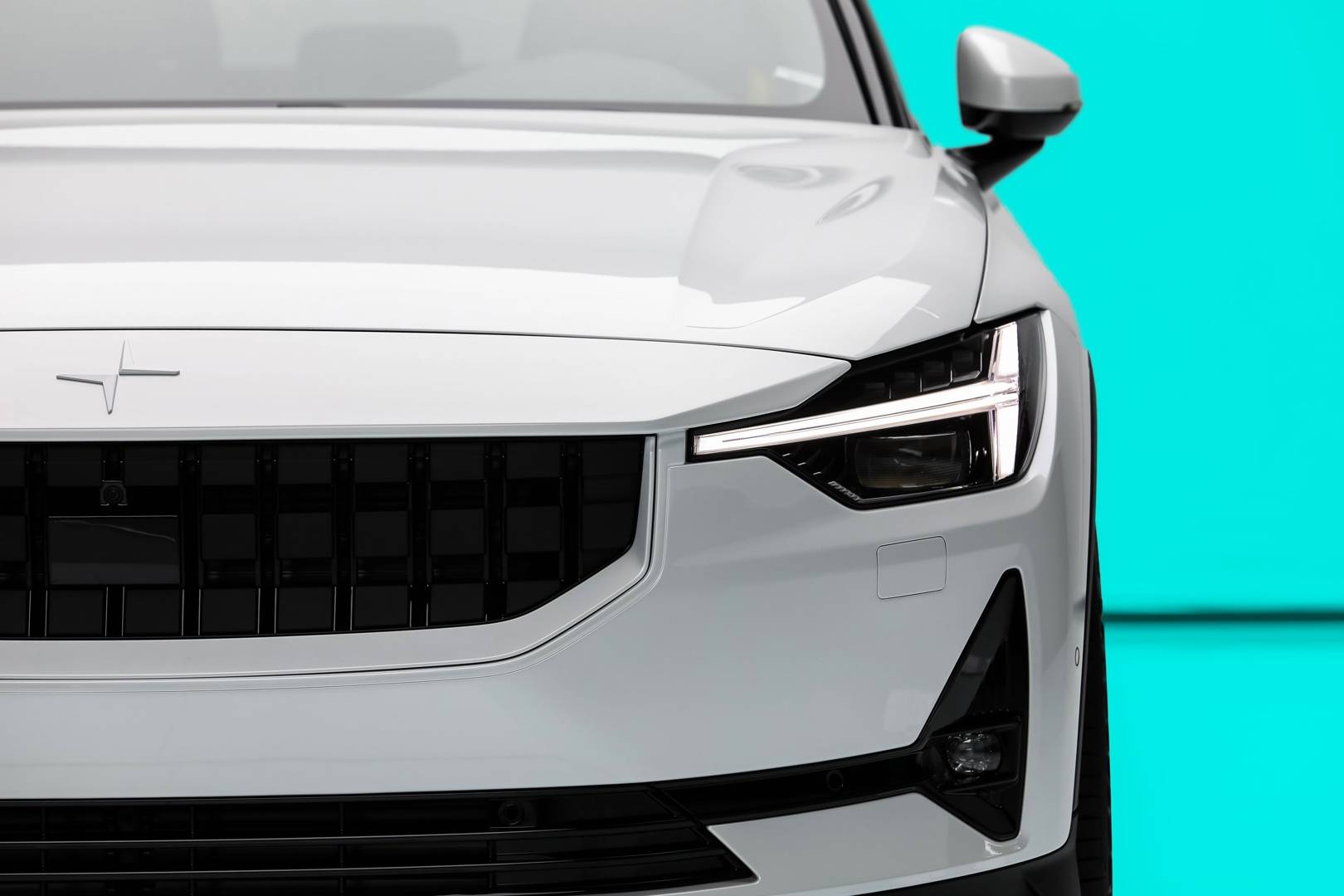
9 / 10
You may recall how much we liked last year’s Polestar 1, a hybrid with blistering pace and sublime styling that combined to make it the most striking plug-in GT there was. The one shame was Polestar limited the production run to just 1,500. Why? It was only ever intended as a stop-gap to show the company’s working as it prepared to release this, the Polestar 2 – the brand’s first full electric car.
And quite the car it is. For those who want the TL;DR version: if the excellent Polestar 1 was the quickie project, intended to iron out kinks and concentrate minds on problems to solve as well as signify publicly a direction for the company, it should not be hard to imagine, with its additional years of development, just how good the Polestar 2 is.
The Polestar 2’s mission is two-fold: to establish the brand as a major figure in the EV scene, and also to take on none other than Tesla and best its Model 3.
Well, considering the impact of the Polestar 1, the announcement of the coming Polestar 3 SUV and Precept as well as the fact that the company (along with Volvo) is owned by the Chinese Geely Auto Group, which also has Lotus and Lynk & Co in its roster of brands, you can cross “establish as a major player” off the list. As for beating the Tesla Model 3? Yes it does. Just.
With prices starting at £49,900, the Polestar 2 costs £7,400 more than the Model 3 at base level. But, as you know, how you choose to configure and spec these cars can quickly raise those figures. A 78kWh battery pack and electric motors on the front and rear axle give the car more than 400bhp split equally between front and rear. This means 0-62mph in 4.7 seconds and a top speed of 127mph (shunning Volvo’s 112mph limit).
So, yes it is fast, and we already expect formidable acceleration from EVs, but what sets the Polestar 2 apart is its sophistication. It is more pleasant to drive than the Model 3, less savage and simpler (in a good way), and so better for urban driving despite having the speed for motorway missions. The driving configuration options are thankfully limited, so no faffing there. And there’s no key or start button either. All you need is the digital key somewhere in the car and you can pull away. Those nagging doubts if you have set the car up right or are getting the most from it are absent. In Apple parlance, it just works.
The regen braking – which can be turned down or off – is heavy but predictable, which means that during one hour-long drive I only touched the brake itself twice – and even then barely. That’s it. The rest of the time it is one-pedal driving.
As for handling, here again it is slightly better than the Model 3. Despite the Polestar’s weight you will be hard-pressed to endure any body roll thanks to excellent suspension aided by the EV advantage of having all the battery heft low down in the floor of the car.
Much like the fine Mini Electric, the best compliment that can be said of this car is that, if you ignore the regen braking, very quickly you forget you are driving an EV. This is an extremely well developed car that has the kind of quality of finish that Tesla has been aiming for but missing, and from the exterior design to the driving experience to the interior there is very little to disappoint.
This fact alone should persuade those thinking of plumping for the Model 3 to change direction. Yes, the Long Range Model 3 is supposedly good for 50 miles more compared to the equivalent “Performance Pack” Polestar 2 (good for up to 292 miles from a full charge), but you will have to run the build-quality gauntlet. With the Polestar, you won’t.
Then there is the exterior design. Put the Model 3 next to the Polestar 2 and there is a clear winner. When my test drive car arrived, my neighbours left their house (in lockdown) to come and admire the bodywork. This is a beautifully designed 5-door ‘fastback’, with the killer touch being the Cylon-like rear brake-light swoosh when it is woken. Polestar also appears to know what to do with a front grille, unlike Tesla.
Things improve further on the inside. You get minimalist Scandinavian design – lots of black – and no superfluous flourishes. Everything has a place and a job. Even the driver’s screen flips to an info display showing charge levels and times in large fonts and colours specifically designed to be easily seen through the side window from the outside in case you want to check on things as the car is plugged in.
Now we get to the Polestar 2’s much-anticipated, completely Google, control and media system. This is the first of its kind, shunning the usual mess of in-house car company-designed infotainment systems with Apple CarPlay or Android Auto shoehorned in, in favour of actually giving what drivers have wanted for years: an extension of their phones.
What you get is a pimped Google tablet that can be configured to show four apps at once in tile format with limited control for each in this view. Tap into the app itself for more control. It requires virtually no instruction to navigate, unlike so many other car systems, and is instantly familiar to anyone who has used a tablet. And then you have Google Assistant, too.
You can do a lot with just your voice in this car. Start Spotify, set a nav destination, send messages, change cabin temperature, etc. In fact, you might want to think of the Polestar 2 as a giant, better-looking Google Home speaker that just happens to have break-neck acceleration and is able to drive just shy of 300 miles before needing plugging in again.
This is the standard Google Assistant, though, with all its frills and foibles. You will be misunderstood more than occasionally. You will be told more often than you should that it cannot help with whatever you are asking for. It will do something completely random from time to time.
The other frustrating matter is that you can do some things by voice in the Polestar 2 but not others, and some things only part of the way. For example, you can turn on the heated seats by vocal command, but not raise or lower the heat settings. For that you have to use the touchscreen. You can ask for a radio station by voice if using TuneIn, but ask for a DAB station and Google falls over. There are numerous ways to open the boot, but you cannot tell the car to open it.
If you are going to make such a feature of voice control, I’d like it to be comprehensive, not selective. And we’re not asking for the Moon here. A decision has been taken somewhere to not let Google raise or lower the seat heat setting. It is perfectly possible for it to do so. Likewise with the DAB radio.
Two electric motors are fitted – one on each axle – between the battery assembly. Each motor produces 204hp and 330Nm, for a total of 408hp and 660Nm
Aloka Muddukrishna, Polestar’s head of the Google UX system, says the system is not finished yet. More is coming, including the ability to download and use nav apps of your choice such as Waze – it’s an easy win over other car companies – and that Polestar will be relying on customer feedback to work out which elements to add to the system via download updates. Such updates will very likely include extensions for the battery range, too, as Polestar gets more data on real-world usage.
Muddukrishna also confirms the maps tile, which has limited functions on the home screen, will become dynamic, a mini sat nav in effect, so you can have instant access to the other favourite apps as well as not having to display the full map view in the driver’s screen. It is working on integrating the streaming apps, too, so you can watch film and TV while you wait for battery charging at motorway services or wherever. These continual tweaks will be most welcome, and should, if done right, continue to improve the Polestar experience and highlight the folly and missed opportunity of the kind of media system you find in virtually all other cars right now.
The only obvious omission is level three autonomy giving the ability of the Polestar 2 to drive itself on the motorway. For a car that is trying so hard to encourage us into the next era of motoring it seems a strange ability to leave out. Price is undoubtedly a factor, but also CEO Thomas Ingenlath believes people just aren’t ready for the technology, saying that many people still don’t know what adaptive cruise control is. It’s neat reasoning, but I disagree. Make a level three system intuitive and reliable and people will flock to use it. Who would want to drive motorway miles if they didn’t have to?
But these minor gripes aside, what Polestar has created is remarkable. The 2 is beautifully designed, well built and, crucially, well conceived. You can tell the effort that has gone into creating this car. No corners cut, a clear vision guiding purpose. Polestar is even planning a two-wheel drive version, as well as one with a smaller battery, which will bring the cost of this EV down even further (the same tactic Tesla used with the Model 3).
This is what happens when those with expertise and a long history of car manufacture catch up with Elon. Tesla had better take note. It has been overtaken. And all the people who have been brave enough to buy the Polestar 2 without even having a test drive – and when I say “all” I mean it as there have been no public drives for customers who have parted with money – they will not be disappointed. This is what EVs should be like. Now we just need to fix the charging system.
Jeremy White is WIRED’s executive editor. He tweets from @jeremywired
More great stories from WIRED
☢️ Nine years on, Fukushima’s mental health fallout lingers
🦆 Google got rich from your data. DuckDuckGo is fighting back
😷 Which face mask should you buy?
read more at https://www.wired.co.uk/ by Jeremy White
Tech









